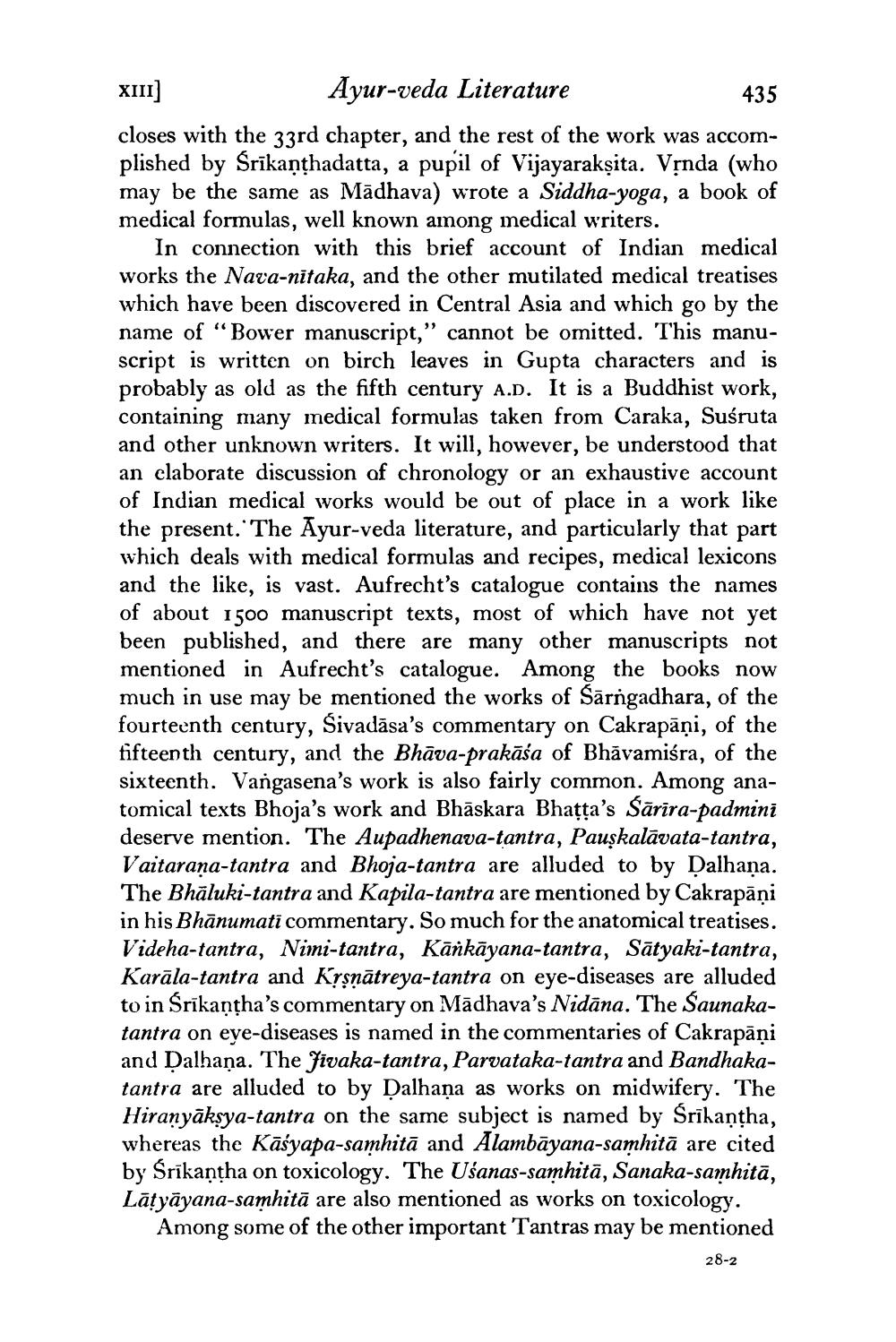________________
XIII Ayur-veda Literature
435 closes with the 33rd chapter, and the rest of the work was accomplished by Śrīkanthadatta, a pupil of Vijayarakṣita. Vịnda (who may be the same as Mādhava) wrote a Siddha-yoga, a book of medical formulas, well known among medical writers.
In connection with this brief account of Indian medical works the Nava-nitaka, and the other mutilated medical treatises which have been discovered in Central Asia and which go by the name of “Bower manuscript,” cannot be omitted. This manuscript is written on birch leaves in Gupta characters and is probably as old as the fifth century A.D. It is a Buddhist work, containing many medical formulas taken from Caraka, Suśruta and other unknown writers. It will, however, be understood that an elaborate discussion of chronology or an exhaustive account of Indian medical works would be out of place in a work like the present.' The Ayur-veda literature, and particularly that part which deals with medical formulas and recipes, medical lexicons and the like, is vast. Aufrecht's catalogue contains the names of about 1500 manuscript texts, most of which have not yet been published, and there are many other manuscripts not mentioned in Aufrecht's catalogue. Among the books now much in use may be mentioned the works of Sārngadhara, of the fourteenth century, Sivadāsa's commentary on Cakrapāņi, of the fifteenth century, and the Bhāva-prakāśa of Bhăvamiśra, of the sixteenth. Vangasena's work is also fairly common. Among anatomical texts Bhoja's work and Bhāskara Bhatta's Sārīra-padmini deserve mention. The Aupadhenava-tantra, Pauşkalāvata-tantra, Vaitaraña-tantra and Bhoja-tantra are alluded to by Dalhaņa. The Bhāluki-tantra and Kapila-tantra are mentioned by Cakrapāni in his Bhānumati commentary. So much for the anatomical treatises. Videha-tantra, Nimi-tantra, Kārkāyana-tantra, Sātyaki-tantra, Karāla-tantra and Krsnātreya-tantra on eye-diseases are alluded to in Śrīkantha's commentary on Mādhava's Nidāna. The Saunakatantra on eye-diseases is named in the commentaries of Cakrapāņi and Dalhaņa. The Jivaka-tantra, Parvataka-tantra and Bandhakatantra are alluded to by Dalhaņa as works on midwifery. The Hiranyāksya-tantra on the same subject is named by Śrīkantha, whereas the Kāšyapa-samhitā and Alambāyana-samhitā are cited by Srikantha on toxicology. The Uśanas-samhitā, Sanaka-samhitā, Lātyāyana-samhitā are also mentioned as works on toxicology.
Among some of the other important Tantras may be mentioned
28-2




